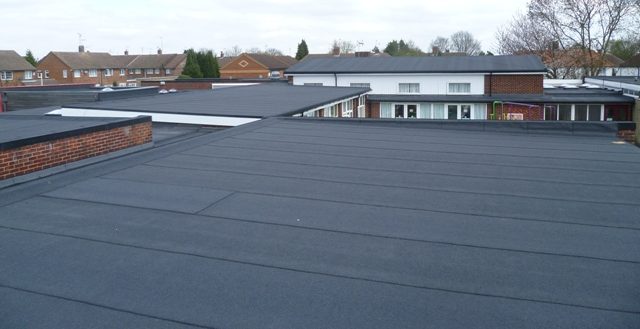A high-quality, well-insulated roof is integral to an energy-efficient property that stays warm and comfortable all year round. As hot air rises, roofs are one of the greatest sources of heat loss within homes. This heat loss can be slowed down significantly through proper insulation. Both flat and pitched roofs should have high-quality insulation to improve the efficiency of the property. Here’s everything you should know about flat roof insulation:
What is flat roof insulation?
Flat roof insulation is applied as a layer between your property’s ceiling and the roofing membrane. There are two main types: warm roof insulation and cold roof insulation. Warm roof insulation is the preferred choice for most roofing experts and homeowners, as it is effective at combating condensation issues. The most common materials that are used for roof insulation are cellulose, fibreglass and mineral wool (the same as for pitched roofs).
Complying with the Building Regulations
Telnik Roofing Ltd are registered with the CompetentRoofer scheme. A contractor under this scheme has the unique ability to self-certify that the work they complete complies with the relevant Building Regulations in England & Wales. If you are replacing 50% of more of your roof, it is a legal requirement that you upgrade the insulation and obtain a Building Regulations Compliance Certificate (BRCC). When the work has been signed off as complete you, the homeowner, will receive a BRCC and insurance backed guarantee. Importantly, Local Authority Building Control (LABC) will automatically be notified that the works have taken place, fulfilling your legal obligation.
Failure to comply with the Building Regulations could result in you receiving an enforcement notice from LABC, requiring the alteration or removal of your roof at your own cost. Also, without a valid BRCC you will encounter trouble when it comes to selling your property. Also, with every domestic notification, a 10-year insurance backed guarantee (IBG) is included to reinforce the contractor’s workmanship guarantee. In the event the roof fails, and the company is no longer in business the IBG will come into effect.
Does my flat roof need insulation?
Depending on the age of your property’s roof, you may need to have insulation installed or replaced. Older properties may be fitted with low-quality insulation. You will be able to tell, as you will have noticed a problem with how well your home holds heat. If you notice any draughts or cold spots, or have trouble keeping your home warm, then your roof may be the issue. Of course, it could also be to do with your wall insulation, windows or floors, so do keep this in mind. If in doubt, it is a good idea to contact roofing specialists like us to advise you on whether you need to have flat roof insulation installed. Here at Telnik Roofing Ltd, we can install high-quality insulation for your flat roof.
Preventing heat loss through your roof
Prevent heat loss through your damaged roof – We all know that hot air rises. That’s why it’s so important for your roof to be properly protected against unnecessary heat loss. If warm air from your home is being lost through your roof, you will notice horrible draughts and cold spots, and you might even experience problems with damp. This will likely mean that you need to use the central heating more frequently, resulting in more expensive energy bills. Luckily, there are some simple ways that you can prevent heat loss through your roof, ensuring your home is warm, affordable to run and comfortable throughout the year.
Insulate your loft – When you turn on the central heating in your home, a lot of thermal energy is lost through the roof of your property. This is the result of two main processes: convection (which is when heat is transferred through the air, and carried away from the heat source) and conduction (which is when heat is passed on through the physical contact of molecules).
The simplest way to prevent heat loss through your roof is to put insulation in the loft. Insulation reduces the amount of heat that is able to pass through the ceilings of your home, keeping it trapped within the living space and stopping it from being wasted in the loft. If you have ever been into a loft, you will have noticed that it is usually very cold!
Check your roof and chimney for damage – Keeping your home warm and energy-efficient can only be achieved if your roof is intact. What might seem like a small amount of damage – for example, broken tiles, missing shingles or torn weatherproofing materials – can make a big difference to your home’s ability to retain heat. The same goes for the chimney: if it is not properly draught-proofed, has been damaged or it is just well-worn, then heat will escape easily. An expert roofing company, such as ourselves will be able to rectify these issues, and stop excessive heat loss from your roof and chimney.

